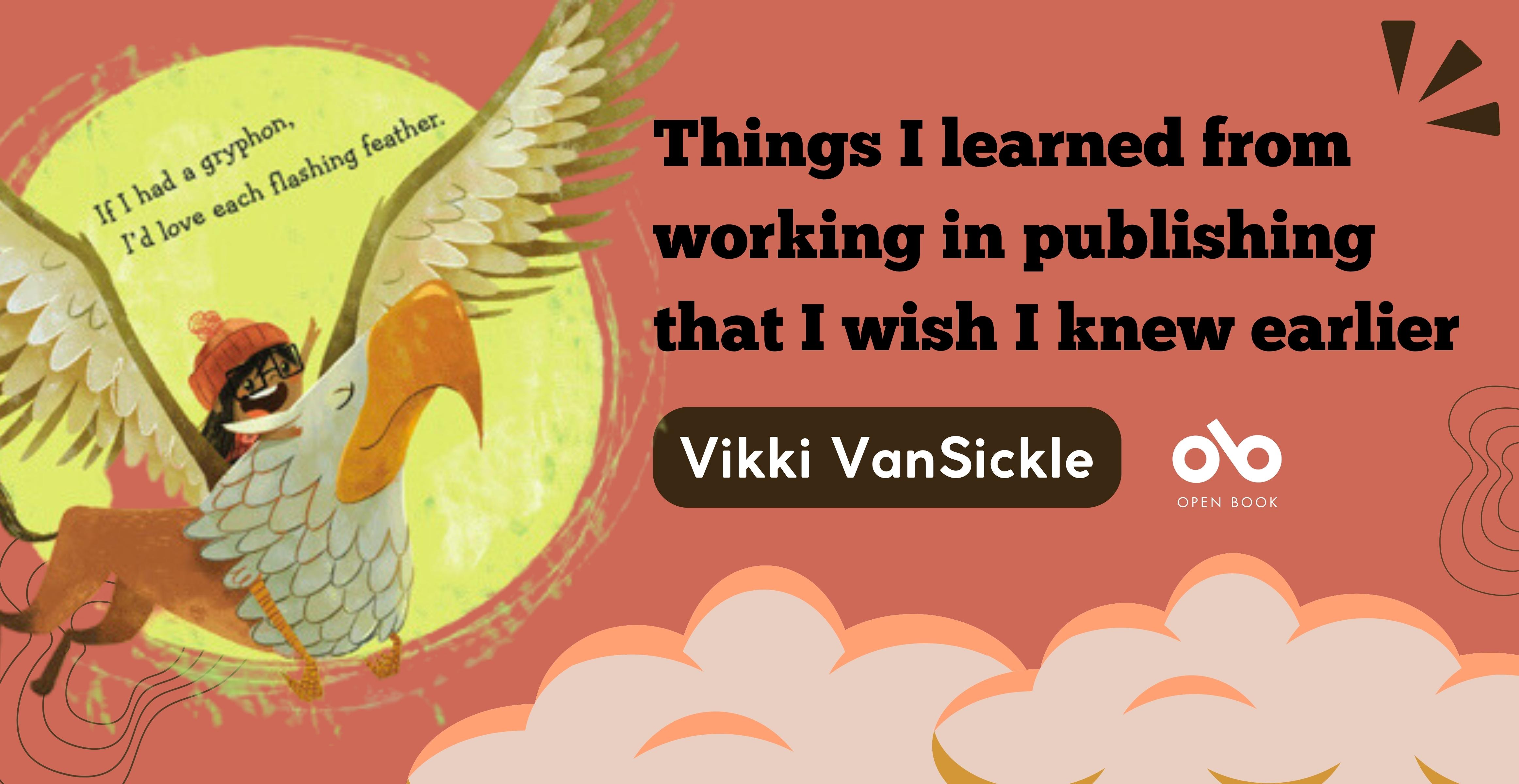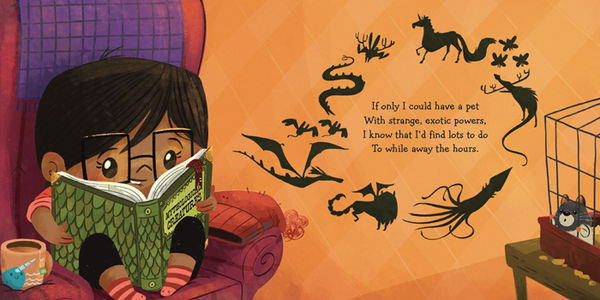Things I Learned from Working in Publishing (That I Wish I Knew Earlier)
By Vikki VanSickle
I spent 12 years in children’s publishing and here is a selection of things I learned on the job that I wish I had known beforehand.
You don’t need an illustrator to submit your picture book manuscript
In fact, it’s better that you don’t submit as a package deal. It’s a good idea to have a few ideas of what style you envision the art, or artists’ whose style you admire, to discuss with your potential editor, but it is the publisher who will seek out and suggest illustrator options to you. Chances are they have more experience, knowledge, and contacts when it comes to artists, so take advantage of their expertise.
Illustrator notes
Illustrator notes are like stage directions for a picture book— they provide details or context for what is happening in the art. They are usually denoted by square brackets in your manuscript. Avoid huge blocks of description. It’s not your job to describe colour, style, facial expressions, or surroundings unless they are imperative to the comprehension of your story. A ton of illustrator notes may signal to an editor or art director that you have a rigid idea of what the story is and may be difficult to work with. Here is an example from the final page of my picture book, If I Had a Gryphon:
He may not be a gryphon,
or a creature from the sea,
but I am his and he is mine
and that’s enough for me.
[Final illustration shows that the hamster is not just a hamster but has its own magical or fantastical features, which the child does not see because of her vantage point. For example, she could be holding it on her shoulder with her back to the reader and we can see the hamster’s profile, perhaps with fangs or a lizard’s tongue, or something noticeably un-hamster like.]
The punchline in this case IS in the art. If you listen to the book but don’t see the art, you miss out on the twist. You can still enjoy the story—the enjoyment of the book doesn’t hinge on this final image—but it adds something special. Note that I’ve left a lot of room here for the illustrator to play.
Your CanLit News
Subscribe to Open Book’s newsletter to get local book events, literary content, writing tips, and more in your inbox
You don’t have final say on the cover
In some cases, your editor will send you a cover image for feedback, but it’s often very close to finalized. This isn’t a hard and fast rule—some authors may be heavily involved, but in general, the publisher will ask for your opinion, which carries less weight than say the sales or marketing director. This is because the cover is your book’s greatest marketing asset and there is a good chance that the publishing team has a deeper understanding of what’s in the market and what sells. What you like may not be what a tween likes, and it’s more important that the intended audience connects with the cover than you do. Cover meetings are among the most contentious and dramatic meetings I ever attended, a battlefield where artistry, commerce, and opinion go head-to-head—I do not miss them.
It takes a village
It may feel like everything is happening in a vacuum but know that many people will touch your book in some way. In most cases, you’ll be in contact with your editor and a publicist—that’s it. You may cross paths with a copyeditor or designer, but rest assured that your book is being read, discussed, and worked on by a larger team. A book is launched, meaning it is presented to the entire company, about a year before it’s publication date. Lots of people have worked on it before then, but this is the time when marketing, sales, and publicity get to work on their campaigns. You don’t need to be in contact with all these people. Your questions and concerns will be passed on to the correct person by the editor (for substantive or production related queries) or publicist (for marketing, publicity, and sales queries).
Marketing is not always visible to you
A lot of the marketing that happens is what I call ‘un-sexy,’ meaning it’s not flashy or public-facing. This includes search engine optimization and other ‘invisible’ digital strategies, meetings with wholesalers, advertising in trade magazines, pitch sessions, strategic newsletter placements with partners, mailings to people without Instagram or TikTok accounts but who are responsible for list selection, among other things. Just because you don’t see something happening in the corner of the internet that you happen to frequent, doesn’t mean nothing is happening. I see a lot of authors complaining that their publishers aren’t doing enough or aren’t using the methods they think work—but don’t forget that it’s the marketing team’s job to stay abreast of what’s working, and trends change quickly.
When I worked in marketing, many authors would point to something they saw someone else do and ask for the same thing without fully understanding the cost or effectiveness. Beware the echo chamber of book twitter or any online space that authors tend to congregate—they only represent a fraction of the market and what’s happening, and while some authors are well-informed, many have very specific experiences that cannot be applied at large.
Books are sold on consignment
This means an account—a bookstore, gift shop, or general interest store like Walmart—will order a quantity of books and if they don’t sell within a certain period—usually 6 months—they can return these books to the publisher and get financial credit for them. You don’t receive royalties for books that are returned—only those that are sold ‘through the register.’ You may see your returns included as a negative number on your royalty statement, which is a bit confusing, as those books were never really sold in the first place. This is one of the reasons organizers at book events work hard at ordering the right number of books and why you shouldn’t inflate your guest list. If you order 100 books for a book launch that only 30 people are coming to, 70% of those books will likely be returned, which doesn’t look great. Seen from another angle, selling 30 books in one hour IS a good news story—but not if you’re looking at it from a returns point of view.
Remember that number of books sold doesn’t equal the number of people who read your book, especially when you take library or classroom circulation into account and remember that people loan books to friends all the time. I have a copy of the third book in the Montmoray Journals (hard to find in Canada) that I’ve loaned to at least 10 people. Sales are obviously important, but they don’t reflect the quality of your book—there are lots of truly bad or banal bestsellers out there.
There is no formula for success
Anyone who claims this to be true is lying or misinformed. A big agent doesn’t mean a 6 figure book deal. An award nomination doesn’t mean a bump in sales. One bestseller doesn’t mean you’ll always make the list. Sending 3,000 advance reading copies out doesn’t mean you’ll make a bestseller list Writing a thriller that is just like that last big thriller—but with a twist!— doesn’t mean you’re the next insert-name-here. Having your book optioned doesn’t mean the movie/show will get made. Author blurbs mean almost nothing to readers. Every season a book comes from left field or seemingly out of nowhere. The not knowing makes publishing frustrating, but it also makes it fun.
The views expressed by Open Book columnists are those held by the authors and do not necessarily reflect the views of Open Book.
Vikki VanSickle is the author of a number of acclaimed novels for children including P.S. Tell No One, Words That Start With B, Summer Days, Starry Nights, and the 2018 Red Maple award-winning The Winnowing. She has also written the picture books If I Had a Gryphon, Teddy Bear of the Year, and Anonymouse. Vikki started her career as an independent bookseller and spent 12 years working in children's publishing. A devoted member of the Canadian children's book world, she curates and presents regular book segments at CTV Your Morning and balances her writing with arts education for all ages.




